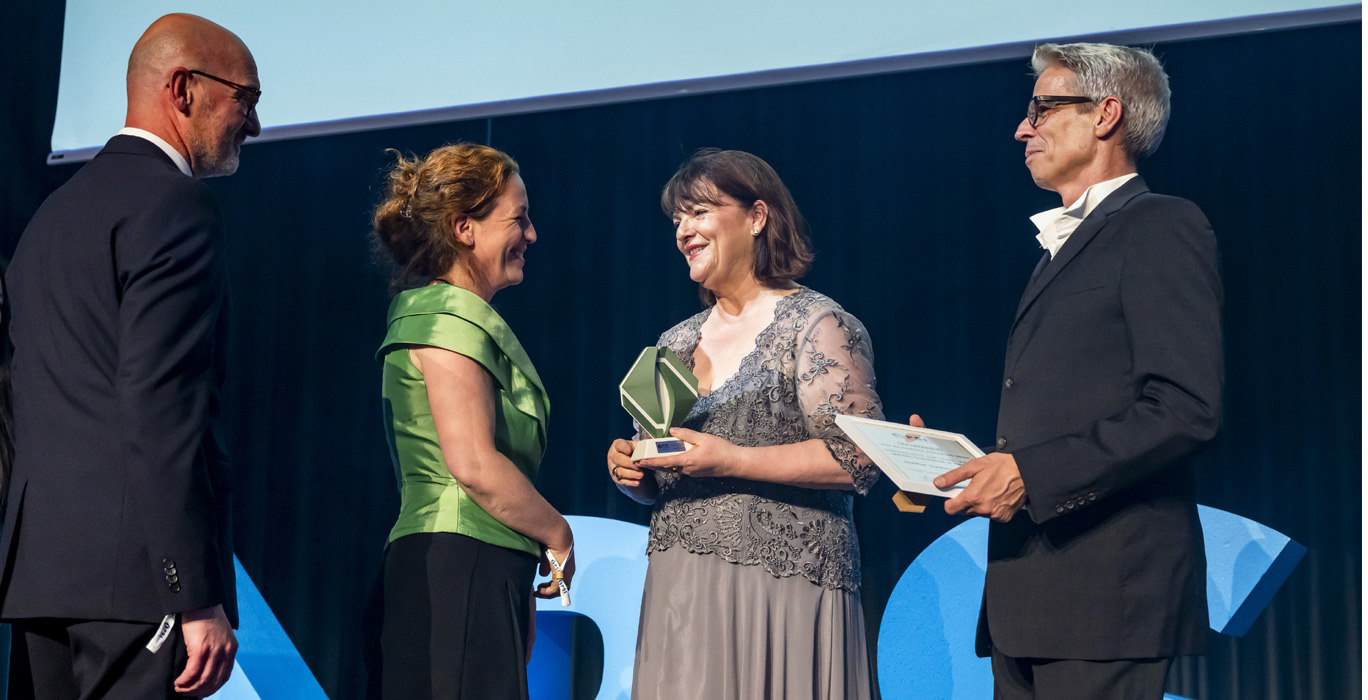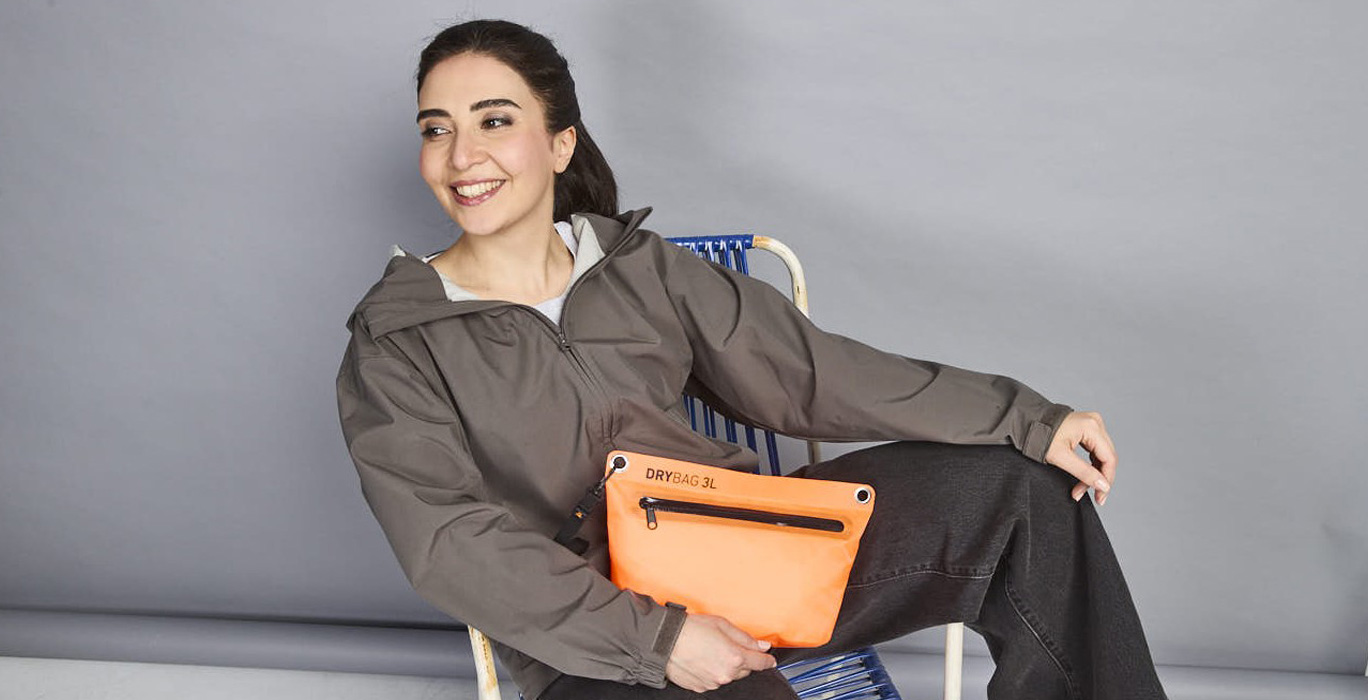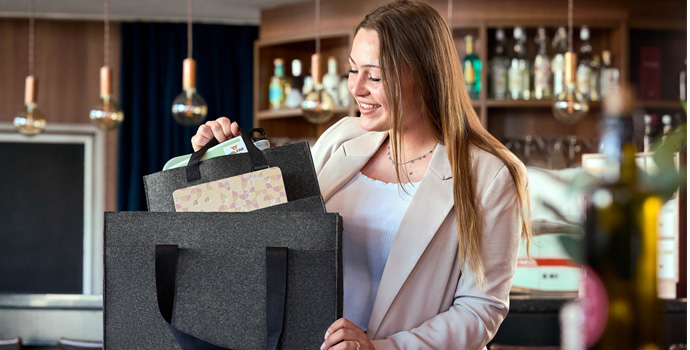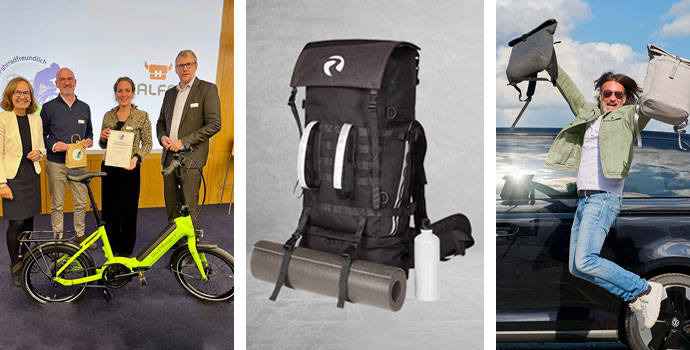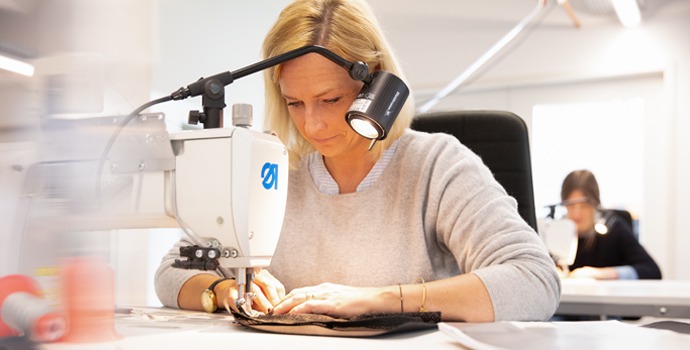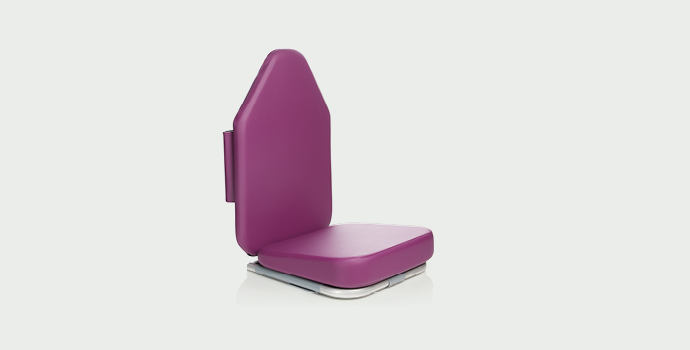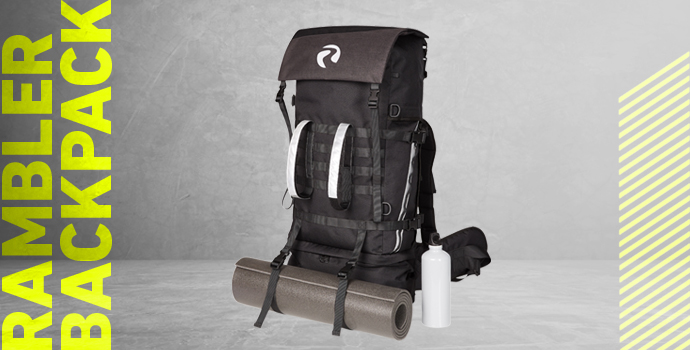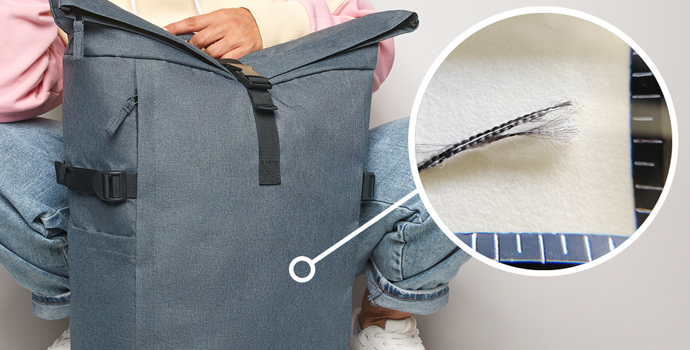What is polyester and how is a polyester fibre made?
Polyester belongs to the family of so-called synthetic fibres or man-made fibres. Unlike cotton or wool, these fibres do not occur naturally and are therefore produced artificially in factories.
The spinneret process is a widespread process in the textile industry that is used to produce synthetic fibres, especially polyester. For this purpose, small polyester granulate (also called polyethylene terephthalate) is melted at high temperature and pressure and pressed through tiny nozzles of a spinneret, similar to a shower head. This creates hair-thin endless threads (filaments), which are then stretched and cooled down so that they retain their shape. The filaments are then collected on a spool and wound up.
By the way: the polyester granulate does not necessarily have to be newly produced from e.g. crude oil, because the granulate required for the production of polyester fibres can also be obtained from recycled PET bottles. Our video shows how a bag is made from a bottle.









